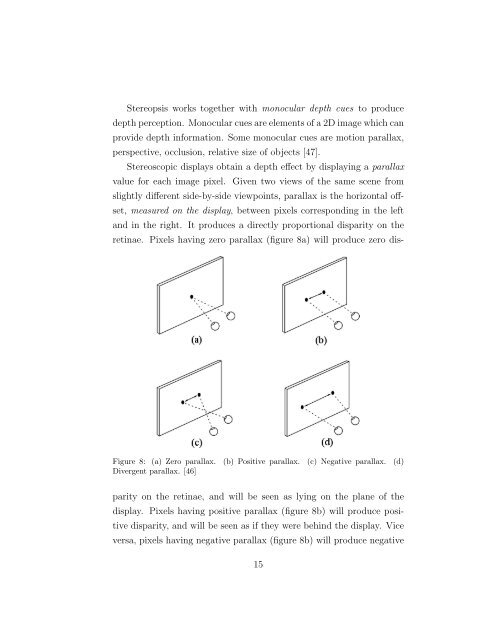Scarica (PDF – 6.19 MB)
Scarica (PDF – 6.19 MB)
Scarica (PDF – 6.19 MB)
You also want an ePaper? Increase the reach of your titles
YUMPU automatically turns print PDFs into web optimized ePapers that Google loves.
Stereopsis works together with monocular depth cues to produce<br />
depth perception. Monocular cues are elements of a 2D image which can<br />
provide depth information. Some monocular cues are motion parallax,<br />
perspective, occlusion, relative size of objects [47].<br />
Stereoscopic displays obtain a depth effect by displaying a parallax<br />
value for each image pixel. Given two views of the same scene from<br />
slightly different side-by-side viewpoints, parallax is the horizontal off-<br />
set, measured on the display, between pixels corresponding in the left<br />
and in the right. It produces a directly proportional disparity on the<br />
retinae. Pixels having zero parallax (figure 8a) will produce zero dis-<br />
Figure 8: (a) Zero parallax. (b) Positive parallax. (c) Negative parallax. (d)<br />
Divergent parallax. [46]<br />
parity on the retinae, and will be seen as lying on the plane of the<br />
display. Pixels having positive parallax (figure 8b) will produce posi-<br />
tive disparity, and will be seen as if they were behind the display. Vice<br />
versa, pixels having negative parallax (figure 8b) will produce negative<br />
15




